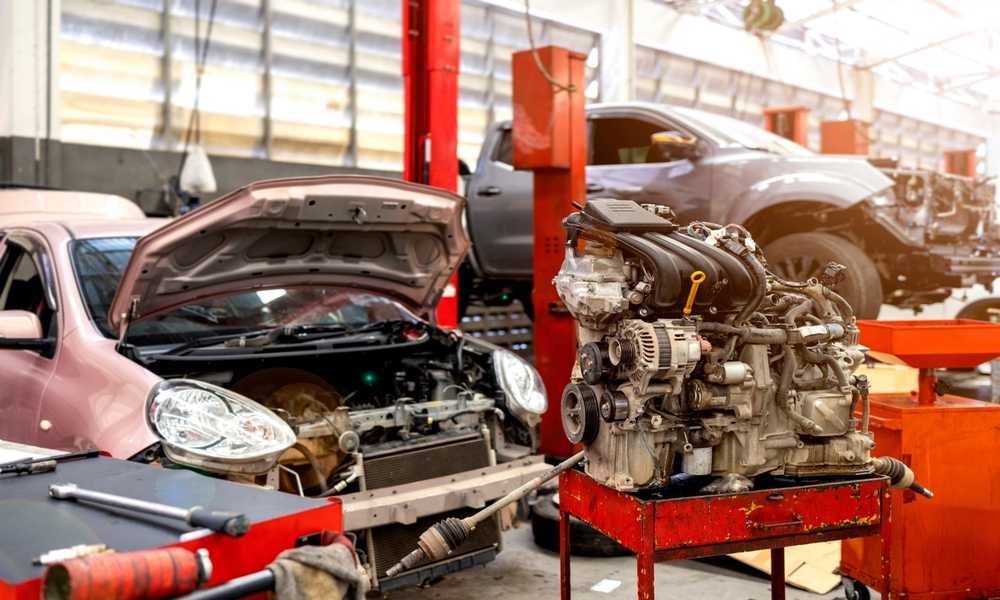Replacing an engine can be a daunting task, but it’s often necessary to keep your vehicle running smoothly. Whether you’ve opted for a brand new engine or a remanufactured one, there are several common problems after engine replacement process. In this blog post, we’ll explore these issues and provide insights on how to address them. So buckle up and join us as we delve into the world of engine replacements and discover some solutions to those pesky post-replacement problems!
What happens when you replace an engine?
When you decide to replace your engine, whether due to age, wear and tear, or a catastrophic failure, it’s like giving your vehicle a new lease on life. Out with the old and in with the new! But what exactly happens during this process?
The mechanics will carefully remove the old engine from its mounting points in the vehicle. This can be a delicate procedure as they need to disconnect various components such as wiring harnesses, hoses, and exhaust systems.
Once the old engine is out of the way, it’s time to install the replacement. The new engine is meticulously aligned and connected to all necessary components. This includes reconnecting electrical connections, attaching fuel lines and coolant hoses, and securing any other ancillary parts that were removed.
After everything is properly reassembled and double-checked for tightness, fluids are filled up – oil for lubrication purposes being one of them. Then comes another crucial step: testing! Mechanics run diagnostics to ensure proper functionality before handing over the keys back to you.
It’s important to note that while replacing an engine brings renewed power and performance potential for your vehicle; there can also be some challenges that arise post-replacement. Don’t worry though – we’ve got you covered! In this article ahead we’ll explore common problems after an engine replacement so you’ll know what signs or symptoms require attention moving forward. Stay tuned!
1. Engine power loss
It can leave you feeling powerless, quite literally. You might notice a sudden decrease in acceleration or overall sluggishness in your vehicle’s performance. There are several potential reasons for this problem. One possibility is that there was an error during the installation process, such as improper alignment of components or incorrect calibration of the engine control unit (ECU). Another possibility is that there could be a problem with the fuel system, such as clogged fuel injectors or a faulty fuel pump. It’s also worth considering if any other parts were replaced along with the engine, as these could have an impact on its performance. For example, if the air intake system was not properly installed or if there are issues with the exhaust system, it could lead to reduced power output.
Regardless of the cause, it’s important to address Engine Power Loss promptly to avoid further damage and ensure optimal performance from your new engine. Consulting with a qualified mechanic who specializes in engine replacements can help diagnose and resolve this issue effectively. Remember, experiencing Engine Power Loss after replacing your engine is not uncommon but should not be ignored. Stay vigilant and address any concerns promptly to get back on the road smoothly and safely!
2. Rough Running Engine
One of the most common problems that can occur after an engine replacement is a rough running engine. This issue can be quite frustrating, as it affects the overall performance and drivability of your vehicle. A rough running engine often manifests itself through symptoms such as vibrations, misfires, or hesitation during acceleration. You may notice that your car feels less smooth and responsive than before. This can be caused by a variety of factors, including incorrect installation of components, fuel system issues, or problems with the ignition system.
If you’re experiencing a rough running engine after an engine replacement, it’s important to address the issue promptly. Ignoring this problem could lead to further damage to your new engine and other components in your vehicle. To diagnose and resolve a rough running engine issue, it’s recommended to consult with a qualified mechanic who has experience in dealing with post-engine replacement problems. They will be able to perform diagnostic tests and identify the root cause of the issue.
Remember, addressing a rough running engine early on can help prevent more serious complications down the line. So if you’re noticing any signs of poor performance or irregularities in your vehicle’s operation after an engine replacement, don’t hesitate to seek professional assistance for proper diagnosis and repair.
3. Fluid underneath the car
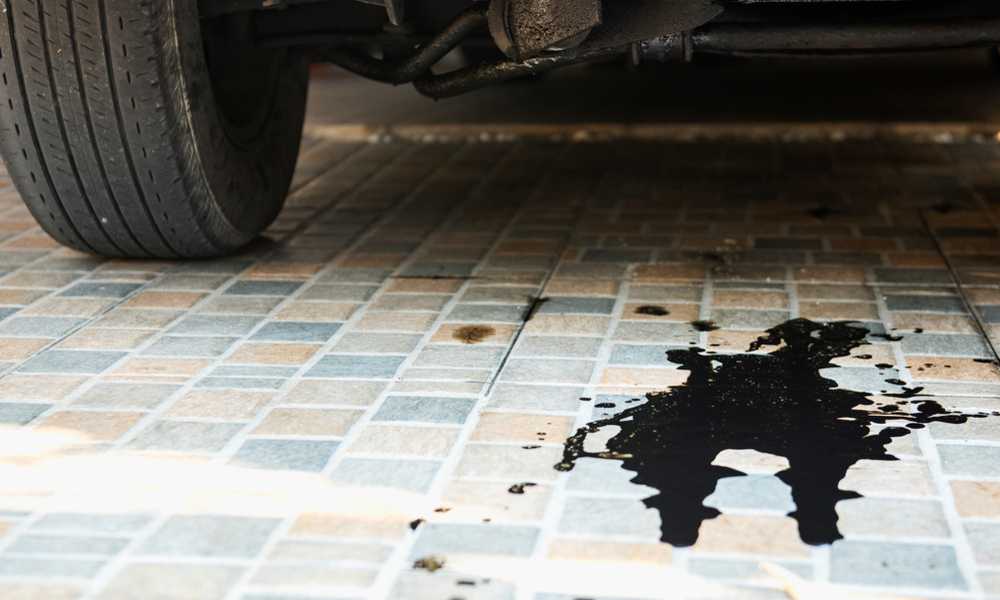
After replacing the engine in your vehicle, one of the common problems you may encounter is finding fluid underneath the car. This can be a cause for concern and should not be ignored. When you see fluid pooling under your vehicle, it could indicate a leak in one of the various systems within your car. Some common fluids that may leak include oil, coolant, transmission fluid, or brake fluid.
If you notice any type of fluid underneath your car after an engine replacement, it’s essential to determine the source and address it promptly. Ignoring a fluid leak can lead to further damage to your engine or other components of your vehicle. To identify the type of fluid leaking, pay attention to its color and consistency. For example, motor oil is typically brown or black and has a slick texture. Coolant often appears green or orange and has a sweet smell.
Once you have identified which system is leaking and what type of fluid it is, take your car to a professional mechanic who can diagnose and repair the issue correctly. They will be able to fix any damaged hoses, gaskets, or seals that are causing the leak.
Remember that addressing fluid leaks promptly not only ensures safe driving but also prolongs the lifespan of your newly replaced engine. So if you spot any unexpected fluids underneath your car post-engine replacement—don’t hesitate! Take action immediately by consulting with an experienced mechanic who can resolve this issue efficiently!
4. Illumination of the check engine light
When you replace an engine, it’s not uncommon to encounter a few issues along the way. One common problem that may arise is the illumination of the check engine light. This little warning sign can be quite alarming for many car owners, as it indicates that there is something wrong with the engine.
The check engine light can come on for a variety of reasons after an engine replacement. It could be due to a loose or damaged sensor, a faulty electrical connection, or even an issue with the newly installed engine itself. Whatever the cause may be, it’s important to address this problem promptly. If your check engine light comes on after an engine replacement, don’t panic just yet. Start by checking if any wires or sensors were accidentally disconnected during the installation process. Sometimes, simple human error can lead to these kinds of issues.
If everything seems fine on that front and you’re still seeing that pesky light illuminated on your dashboard, then it might be time to seek professional help. A mechanic will have access to specialized diagnostic tools that can pinpoint exactly what is causing the check engine light to stay lit. Remember not to ignore this warning sign as it could indicate more serious problems down the line if left unaddressed. The key here is early detection and swift action!
5. The oil filter malfunctions
One of the common problems that can occur after an engine replacement is a malfunctioning oil filter. The oil filter plays a crucial role in the engine’s overall health and performance, so when it malfunctions, it can lead to serious issues. When the oil filter malfunctions, it may not effectively remove contaminants from the engine oil. This can result in dirty or contaminated oil circulating through the engine, which can cause damage over time. Additionally, a malfunctioning oil filter may not properly regulate the flow of oil, leading to inadequate lubrication for various engine components.
One sign of a faulty oil filter is decreased fuel efficiency. When contaminants build up in the oil and clog the filter, it can restrict proper fuel flow and combustion within the engine. As a result, you may notice reduced gas mileage and increased fuel consumption. Another indication of an issue with your oil filter is increased engine noise. A malfunctioning filter can allow debris to circulate freely through the engine, causing unwanted friction and noise as parts rub against each other without sufficient lubrication.
If you suspect that your new engine’s oil filter is malfunctioning, it’s important to address it promptly. Have a professional inspect and replace the faulty part if necessary to ensure optimal performance and longevity for your vehicle’s new heart – its replaced engine! Keep in mind that regular maintenance checks are key to catching potential issues early on before they become major headaches down road!
6. Unusual smoke
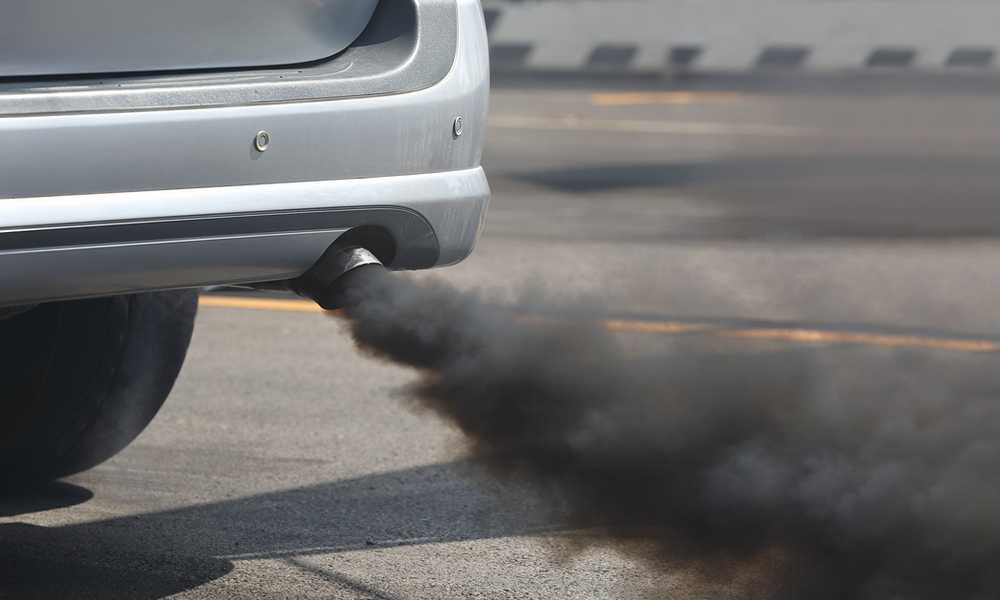
One of the common problems that can occur after engine replacement is the presence of unusual smoke. When you start noticing smoke coming out from your car’s exhaust, it’s definitely a cause for concern.
There are different types of smoke that can indicate various issues with your newly replaced engine. For instance, if you see thick white smoke, it could be a sign of coolant leaking into the combustion chamber. This could mean a blown head gasket or a cracked cylinder head.
On the other hand, blue or grayish smoke may suggest burning oil. This could be caused by worn piston rings or valve seals that are not properly sealing in the oil within the combustion chamber. Another type of smoke to watch out for is black smoke which indicates an excessive fuel-air mixture. This could be due to a faulty injector or problems with the air intake system.
Regardless of the color, if you notice any unusual smoke after an engine replacement, it’s crucial to have it checked by a professional mechanic immediately. Ignoring this issue can lead to further damage and potentially costly repairs down the line. Remember, every car and engine is unique and requires careful attention when troubleshooting issues like unusual smoke post-engine replacement.
7. Weird noises
One of the common problems that you may encounter after replacing your engine is the presence of weird noises. These strange sounds can be quite concerning and may indicate underlying issues with your new engine. One type of noise you might hear is a knocking or tapping sound. This could be a sign of improper lubrication, worn-out bearings, or loose components within the engine. It’s important not to ignore these noises as they could lead to more severe damage if left unaddressed.
Another unusual noise that you might experience is a whining or squealing sound. This could be indicative of a belt or pulley problem, such as a loose or worn-out belt tensioner. It’s crucial to get this checked out promptly to prevent further damage and potential breakdowns.
Additionally, you might notice rattling or grinding noises coming from your engine compartment. These sounds could suggest issues with the timing chain, camshaft, valves, or other internal components. Ignoring these noises could result in costly repairs down the line.
Remember that each car and engine replacement situation is unique, so it’s essential to consult with a professional mechanic who can diagnose and resolve any strange noises post-engine replacement accurately. By addressing these weird noises promptly, you can ensure the longevity and optimal performance of your newly replaced engine.
8. Excessive exhaust
Excessive exhaust can be a concerning issue after engine replacement. When you notice a thick, dark smoke coming out of your tailpipe, it’s important not to ignore it. This excess exhaust can indicate several underlying problems that require attention.
One possible cause of excessive exhaust could be a problem with the fuel injection system. If the fuel injectors are not functioning properly, they may deliver too much fuel into the cylinders, resulting in an abundance of unburned fuel and creating thick smoke.
Another potential culprit could be a leaking or damaged exhaust manifold gasket. This gasket seals the connection between the engine block and the exhaust manifold. If it becomes faulty, it can allow gases to escape before reaching the catalytic converter, leading to excessive exhaust emissions.
Additionally, worn-out piston rings or cylinder walls can also contribute to excessive exhaust. These components help seal in combustion gases within each cylinder. When they wear down over time or become damaged during an engine replacement process, they may allow oil to leak into the combustion chamber and burn along with fuel.
A malfunctioning catalytic converter can lead to increased levels of harmful emissions in your vehicle’s exhaust. If this important component is not operating efficiently or has been damaged during engine replacement, it should be inspected and replaced if necessary.
9. Excessive overheating
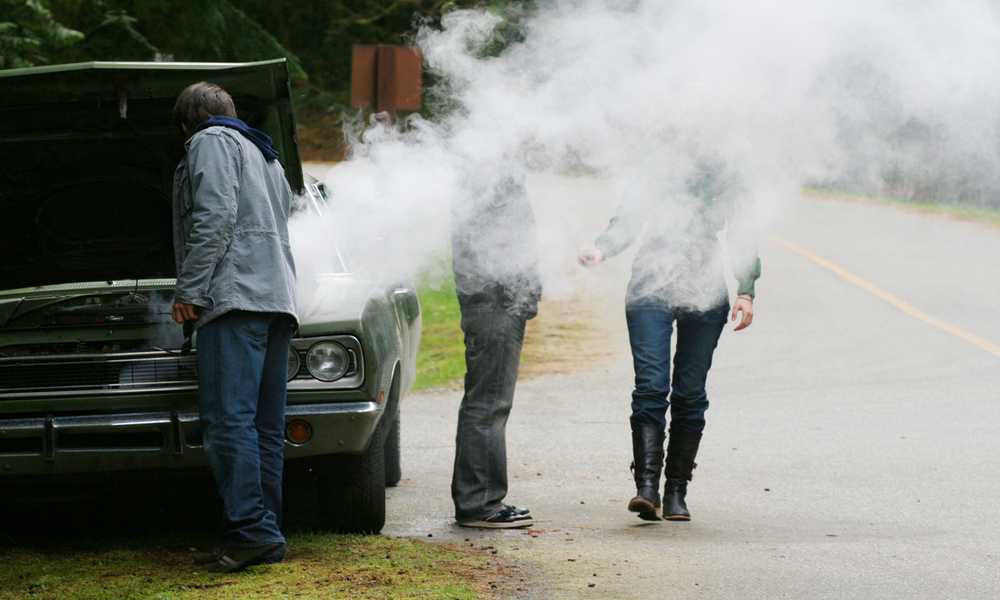
When an engine overheats, it can cause serious damage and lead to costly repairs if not addressed promptly. One possible cause of excessive overheating is a malfunctioning thermostat. The thermostat regulates the temperature of the engine by opening and closing as needed. If it becomes stuck in the closed position, coolant cannot flow through the radiator to cool down the engine, resulting in overheating.
Another potential culprit could be a faulty water pump. The water pump circulates coolant throughout the engine, helping to regulate its temperature. If the water pump fails or becomes worn out, it may not be able to effectively move coolant through the system, leading to overheating. Additionally, a leak in the cooling system can also cause excessive overheating. Whether it’s a cracked hose or a damaged radiator, any loss of coolant will disrupt the engine’s ability to stay within its optimal temperature range.
To prevent excessive overheating after an engine replacement, regular maintenance and inspections are crucial. It’s important to check for leaks in hoses and radiators regularly and replace any worn-out components promptly. If you notice your vehicle exhibiting signs of excessive overheating such as steam coming from under the hood or warnings on your dashboard temperature gauge rising into dangerous levels while driving then consult with a qualified mechanic immediately before further damage occurs!
How to prevent issues after the engine replacement?
After investing in a new engine replacement, it’s only natural to want everything to run smoothly without any hiccups. To ensure that your newly installed engine continues performing at its best, there are a few key areas you should pay attention to.
1. Change worn-out timing belt or chain
The timing belt or chain plays a crucial role in the engine’s operation. It ensures that the valves open and close at the right time, allowing for proper combustion. However, over time, these components can wear out due to constant use and exposure to heat.
If you’ve recently replaced your engine, it’s essential to check and change the worn-out timing belt or chain. Failure to do so could result in severe damage to your new engine. A snapped timing belt or a loose chain can cause the pistons and valves to collide, leading to costly repairs.
To prevent such issues after an engine replacement, make sure you inspect and replace any worn-out timing belts or chains promptly. This small investment will go a long way in ensuring the smooth functioning of your new engine and avoiding potential problems down the line. Remember, prevention is always better than cure when it comes to maintaining your vehicle’s performance and longevity! So don’t overlook this vital step after an engine replacement.
2. O-rings and gasket
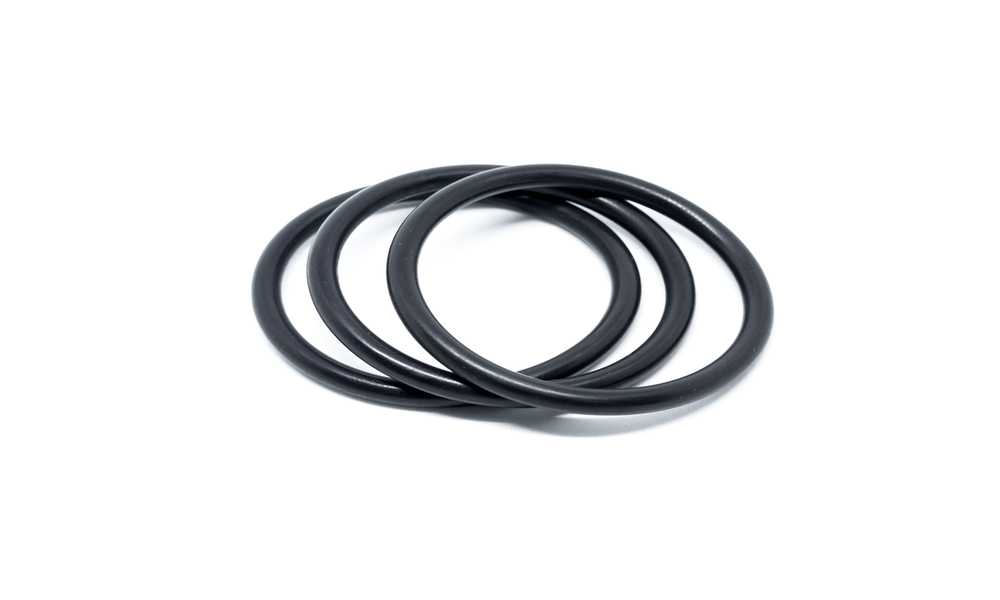
When it comes to engine replacements, one crucial aspect that often gets overlooked is the condition of the O-rings and gaskets. These small but important components play a vital role in maintaining proper sealing and preventing leaks.
Over time, O-rings and gaskets can become worn out or damaged due to heat, pressure, and age. If not replaced during an engine replacement, they can cause numerous issues down the line. Leaking coolant, oil seepage, or even potential damage to other engine parts are just a few examples of problems that can arise.
To prevent these issues after an engine replacement, it’s essential to inspect and replace any worn-out or damaged O-rings and gaskets. This will ensure proper sealing between different components such as cylinder heads, intake manifolds, water pumps, and oil pans.
By taking the time to address this commonly overlooked area during an engine replacement process, you can avoid costly repairs later on. So don’t forget about those little O-rings and gaskets – they may be small components but have a big impact on your engine’s performance!
3. Change dirty air filters
When your air filter is clogged with dirt and debris, it restricts airflow to the engine, which can lead to reduced performance and efficiency. This can result in decreased fuel economy and sluggish acceleration.
Additionally, a dirty air filter can also affect the combustion process within the engine. It may allow particles to enter the cylinders, causing damage to internal components over time. This can lead to increased wear and tear on your engine and potentially expensive repairs down the line.
By changing your dirty air filters regularly, you ensure that clean air reaches your engine for optimal performance. A clean air filter promotes better fuel combustion and helps prevent contaminants from entering critical parts of the engine.
Regularly inspecting and replacing your air filters is a simple yet effective way to maintain the health of your newly replaced engine. By doing so, you’ll not only improve its longevity but also enjoy better overall vehicle performance.
4. Change the clogged oil filter
The oil filter plays a vital role in keeping your engine running smoothly by removing dirt, debris, and contaminants from the oil. Over time, the filter can become clogged with these particles, limiting its ability to perform effectively.
A clogged oil filter can lead to various problems after an engine replacement. It can restrict oil flow to different parts of the engine, causing insufficient lubrication and increased friction. This can result in excessive wear and tear on critical components like pistons, camshafts, and crankshafts.
A clogged oil filter may cause a drop in fuel efficiency since it affects how well the engine performs. With restricted oil flow compromising optimal performance, your vehicle may experience decreased power output and acceleration.
Furthermore, neglecting to change a clogged oil filter could lead to irreversible damage such as overheating or even complete engine failure. Contaminated or dirty oil cannot adequately cool the engine’s internal components or provide proper lubrication. This puts unnecessary stress on critical parts that rely on clean and properly functioning filtration systems.
To prevent these issues after an engine replacement or at regular intervals according to manufacturer recommendations is essential for maintaining optimum performance levels of your vehicle while extending its lifespan. By ensuring that you change your clogged oil filters promptly following an engine replacement will help safeguard against potential problems down the road!
5. Replace the failing water pump
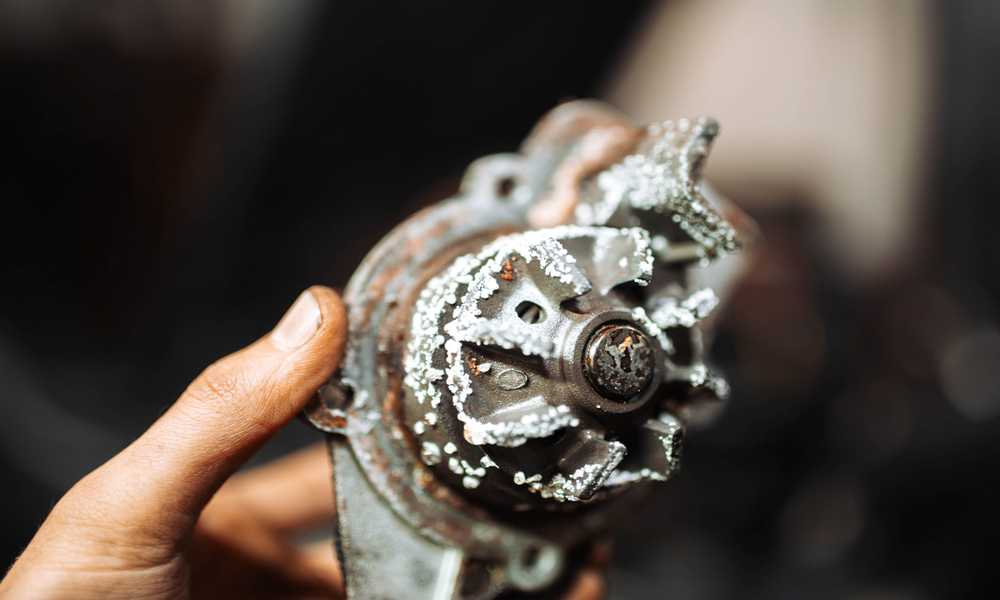
When it comes to engine replacement, one of the common problems that can arise is a failing water pump. The water pump plays a crucial role in keeping your engine cool and preventing overheating. Over time, the bearings in the water pump can wear out or become damaged, leading to leaks or decreased performance.
Replacing a failing water pump is important because if left unaddressed, it can lead to serious damage to your engine. A faulty water pump can cause coolant leaks, which not only results in inefficient cooling but also puts additional strain on other components of the engine.
To prevent issues after an engine replacement, replacing the failing water pump is imperative. It’s recommended to replace both the timing belt and the water pump at the same time since they often share similar life spans and are located near each other within the engine.
By promptly addressing any issues with your vehicle’s water pump during an engine replacement, you’ll ensure optimal cooling system performance and prolong the life of your new engine. So don’t forget about this essential component when undergoing an engine replacement!
6. Replace broken seals
Seals play a crucial role in preventing leaks of fluids such as oil, coolant, and fuel. Over time, seals can wear out or become damaged, leading to leaks that can damage the engine components or affect its overall functionality.
When replacing broken seals, it’s important to use high-quality replacements that are specifically designed for your vehicle’s make and model. These seals should be installed correctly to ensure a proper seal and prevent any potential leaks.
One common type of seal that may need replacement is the valve cover gasket. This gasket sits between the valve cover and the cylinder head, sealing off the top of the engine from outside contaminants. If this gasket becomes brittle or damaged, it can lead to oil leaks which can result in poor engine performance or even engine damage if left unaddressed.
Another seal that may require replacement is the crankshaft seal. This seal prevents oil from leaking out around the crankshaft where it connects with other parts of the engine. A failing crankshaft seal can result in oil leakage onto other components such as belts or pulleys, causing them to deteriorate prematurely. Additionally, replacing broken seals on components like intake manifolds or water pumps is also crucial for maintaining proper fluid flow and preventing any potential leaks.
Replacing broken seals after an engine replacement ensures proper sealing and helps prevent future issues related to fluid leakage. By addressing these small but significant details during an engine replacement process, you’ll help prolong your new engine’s lifespan and maintain its optimal performance levels for years to come!
7. Change damaged sensors
One crucial aspect of engine replacement is ensuring that all damaged sensors are replaced. Sensors play a significant role in monitoring various aspects of the engine’s performance and relaying information to the vehicle’s computer system. When these sensors become faulty or damaged, it can lead to a range of issues.
For instance, a malfunctioning oxygen sensor can affect fuel efficiency and emissions control, while a faulty coolant temperature sensor may cause overheating problems. Ignoring these issues can result in poor engine performance, decreased fuel economy, and potential damage to other components. To prevent such problems after an engine replacement, it is essential to inspect all sensors thoroughly and replace any that show signs of damage or malfunction. This ensures that the new engine operates optimally and maintains its efficiency.
Additionally, it’s important to use high-quality sensors from reputable manufacturers for reliable performance and longevity. Regular maintenance checks should also be conducted to ensure the continued functionality of these critical components. Changing damaged sensors during an engine replacement is crucial for maintaining proper functionality and preventing future problems down the road.
8. Change faulty spark plugs
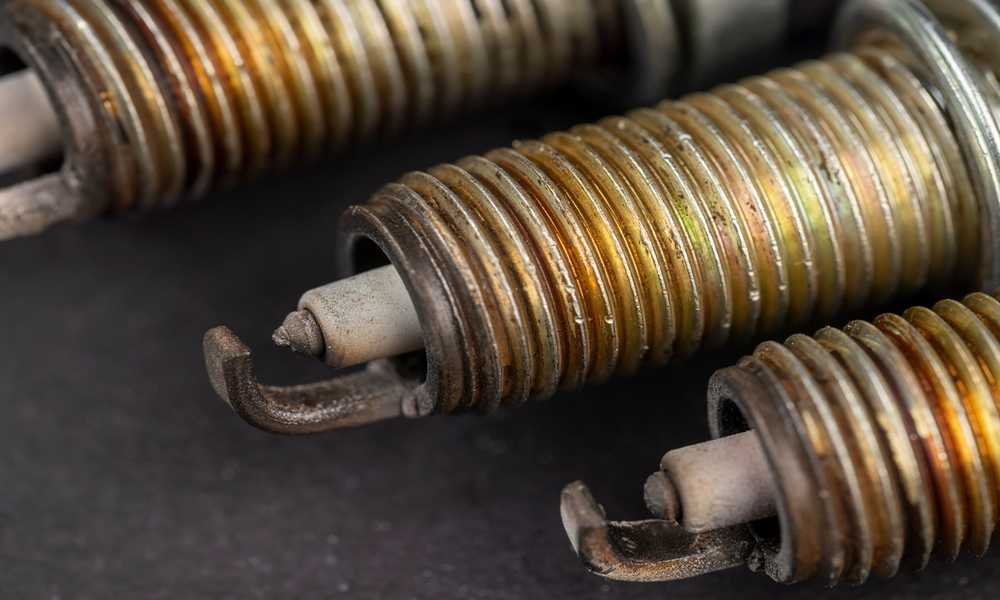
One important step to take after engine replacement is to change faulty spark plugs. Spark plugs play a vital role in the combustion process by igniting the air and fuel mixture inside the cylinders. Over time, spark plugs can become worn out or damaged, affecting their performance.
Faulty spark plugs can lead to various problems with your engine. For starters, you may experience misfires or rough idling. This can result in decreased fuel efficiency and overall poor engine performance. Additionally, faulty spark plugs can cause issues with starting your vehicle and even lead to engine stalling.
By replacing faulty spark plugs, you can ensure that your new engine operates at its best. It’s recommended to consult your vehicle’s manual or a trusted mechanic for guidance on choosing the right type of spark plug for your specific engine model. Regularly inspecting and changing spark plugs as part of routine maintenance will help prevent potential problems down the line. So don’t overlook this crucial step after an engine replacement!
What is engine replacement?
Engine replacement refers to the process of replacing the existing engine in a vehicle with a new one. It is often done when the original engine becomes worn out, damaged beyond repair, or simply no longer performs at an optimal level. While it may seem like a daunting task, engine replacement can actually breathe new life into your vehicle and extend its lifespan.
When considering whether to opt for engine replacement or buy a new car altogether, several factors come into play. One key advantage of choosing engine replacement is cost savings. A new engine can be significantly cheaper than purchasing a brand-new vehicle. Additionally, by replacing the engine instead of buying a new car, you also avoid the hassle of transferring insurance policies and registrations.
To ensure smooth functioning after an engine replacement, it’s important to take certain preventive measures. One common problem that can arise after installation is related to sensors. Over time, these tiny devices may become damaged or malfunctioning due to wear and tear. Therefore, it is advisable to change any damaged sensors during the installation process itself.
Another issue that may occur post-engine replacement involves faulty spark plugs. These essential components play a crucial role in igniting fuel within the cylinders and should always be inspected for signs of damage or wear before starting up your newly replaced engine.
Why should I buy a new engine?
When faced with the decision of whether to replace your engine or buy a new car altogether, it’s important to consider several factors. First and foremost, buying a new engine can be a cost-effective solution compared to purchasing an entirely new vehicle. Engines are often one of the most expensive components of a car, so replacing just the engine can save you thousands of dollars.
Another reason to opt for a new engine is that it allows you to keep your beloved car. If you have an emotional attachment to your current vehicle or if it holds sentimental value, investing in a new engine can help prolong its lifespan and keep it running smoothly for years to come.
Additionally, buying a new engine gives you the opportunity to upgrade. You may choose an upgraded or more powerful engine that enhances your driving experience and performance on the road.
Furthermore, by purchasing a new engine instead of buying another car, you are also minimizing your environmental impact. Recycling and reusing parts not only reduces waste but also conserves energy and resources required for manufacturing brand-new vehicles.
Considering all these reasons, buying a new engine becomes an attractive option that provides financial savings while allowing you to maintain your cherished vehicle’s functionality and personal connection without contributing further harm to our planet.
Engine replacement vs buying a new car
When faced with the decision to replace your engine or buy a new car, it’s important to consider several factors. First and foremost is the cost. Engine replacement can be a more affordable option compared to purchasing a brand-new vehicle. However, it’s essential to weigh the potential lifespan of the replaced engine against the overall condition of your current car.
Another factor to consider is sentimental value. If you have an emotional attachment or fond memories associated with your existing vehicle, opting for an engine replacement may allow you to keep that connection alive. Additionally, if your car has been well-maintained and still offers reliable performance aside from the engine issue, replacing it could save you from having to start over with unfamiliar features and technology.
On the other hand, buying a new car comes with its own set of advantages. With advancements in automotive technology, newer vehicles often offer improved fuel efficiency, enhanced safety features, and updated infotainment systems. Additionally, warranties provided by manufacturers can provide peace of mind knowing that any unexpected issues will likely be covered.
How to avoid common problems after engine replacement?
One of the most important steps to avoid common problems after engine replacement is to choose a reputable mechanic or dealership for the job. Make sure they have experience with engine replacements and are knowledgeable about your specific vehicle make and model.
Additionally, it’s crucial to use high-quality parts during the replacement process. This includes components such as gaskets, seals, belts, hoses, and filters. Using cheap or subpar parts can lead to premature wear and potential issues down the line.
Proper break-in procedures are also essential for a new engine. It’s important to follow manufacturer guidelines regarding the break-in period, which usually involves avoiding excessive idling or full-throttle acceleration. Gradually increasing driving distances over time allows the engine components to settle properly.
Regular maintenance is key in preventing problems after an engine replacement. This includes changing the oil regularly, inspecting and replacing filters as needed, checking fluid levels, and monitoring for any unusual sounds or vibrations.
Another aspect that often gets overlooked is addressing any pre-existing issues before installing a new engine. If there were underlying problems that caused the need for an engine replacement in the first place – such as coolant leaks or overheating – it’s crucial to address these issues before installing a new engine. By following these tips and taking proper care of your newly replaced engine, you can minimize common problems and ensure its longevity on the road ahead!
How long does it take for a new engine to settle?
When it comes to replacing an engine, one common question that arises is how long does it take for a new engine to settle? While the exact timeframe may vary depending on various factors, there are some general guidelines to keep in mind.
It’s important to understand that a new engine needs time to break in and adapt to its surroundings. During this initial period, components like piston rings and bearings need time to seat properly and create optimal compression. This process can take anywhere from a few hundred miles up to around 1,000 miles.
During the break-in period, it’s crucial not to put excessive strain on the engine. Avoid heavy acceleration or high RPMs for extended periods of time. Instead, drive at varying speeds and avoid prolonged idling.
Regular oil changes during the first few thousand miles are also essential as they help remove any metal particles or debris that may accumulate during the break-in process. In addition, pay attention to any warning signs or abnormal noises coming from your new engine. If you notice anything unusual or concerning, don’t hesitate to consult with a professional mechanic.
By allowing your new engine sufficient time and care during the settling period, you can help ensure its longevity and performance for years to come. So be patient and give your replacement engine the proper break-in it deserves!
What to do after replacing engine?
After successfully completing an engine replacement, it is crucial to take a few additional steps to ensure that everything runs smoothly. Here are some important things you should do after replacing your engine:
Double-check all connections: Before starting the engine, carefully inspect all the connections and hoses to make sure they are securely attached. This will help prevent any potential leaks or loose components.
Properly lubricate the new engine: It’s essential to use high-quality oil and follow the manufacturer’s recommendations for proper lubrication of your newly replaced engine. Adequate lubrication is vital for optimal performance and longevity.
Perform an initial test run: Start the engine and let it idle for a few minutes while monitoring its performance closely. Look out for any abnormal noises, vibrations, or warning lights on the dashboard.
Go for a test drive: Take your vehicle out on a short test drive to assess how well the new engine performs under different driving conditions. Pay attention to acceleration, braking, and handling characteristics.
Schedule regular maintenance checks: To keep your newly replaced engine in top shape, it’s crucial to maintain regular service intervals as recommended by the manufacturer. This includes oil changes, filter replacements, and periodic inspections.
Monitor fluid levels regularly: Keep an eye on coolant levels, transmission fluid levels (if applicable), and oil levels regularly after an engine replacement. Low fluids can lead to overheating or other issues if not addressed promptly.
Reprogram electronic systems if necessary : In some cases where newer engines are installed into older vehicles , reprogramming of electronic systems may be required . Ensure that all electronic components such as sensors , modules etc function properly .
By following these post-engine replacement guidelines diligently, you can minimize common problems that may arise after installing a new engine in your vehicle.
How long will a car last after engine replacement?
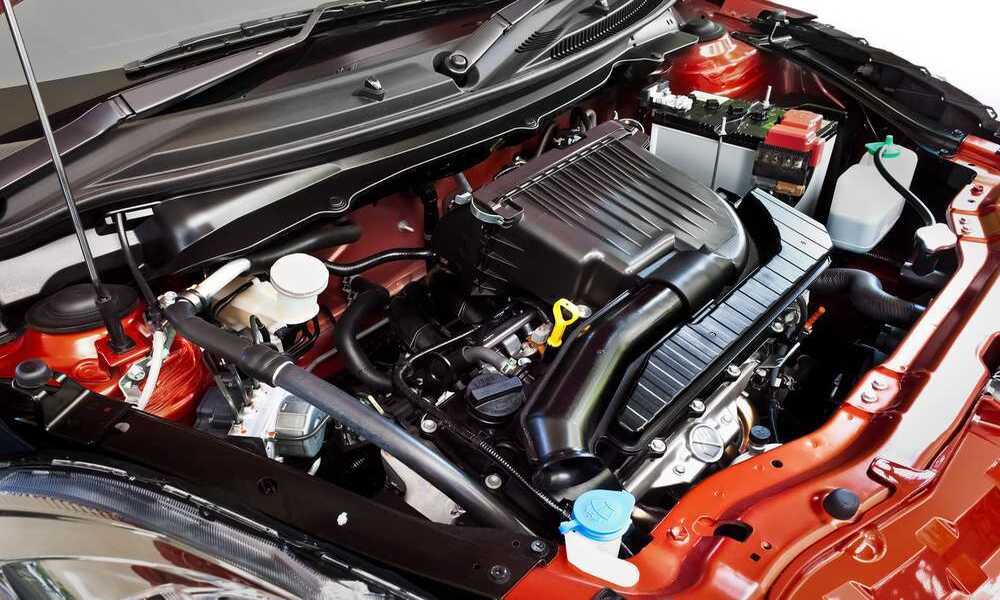
So, you’ve just replaced your car’s engine and now you’re wondering how long this new lease on life will last. Well, the answer to that question isn’t always straightforward.
There are several factors that can affect the longevity of a car after an engine replacement. First and foremost is the quality of the replacement engine itself. If you opted for a high-quality, reliable engine from a reputable manufacturer, chances are it will serve you well for many years to come.
Another important factor is how well you maintain your vehicle moving forward. Regular oil changes, proper maintenance schedules, and addressing any issues promptly can significantly extend the lifespan of your newly installed engine.
Additionally, driving habits play a role in determining how long your car will last post-engine replacement. Aggressive driving styles or neglecting routine maintenance can put unnecessary strain on the new engine and lead to premature wear and tear.
It’s also worth noting that other components of your vehicle may start showing signs of age before the new engine does. Therefore, it’s crucial to stay vigilant about maintaining all aspects of your car to ensure its overall longevity.
Remember though; there’s no magic number or guarantee when it comes to how long a car will last after an engine replacement. It ultimately depends on various factors like regular maintenance, driving habits, and component health – all working together harmoniously for miles upon miles of smooth driving pleasure!
Does replacing an engine affect the transmission?
When it comes to replacing an engine in a car, one common concern is whether or not it will affect the transmission. The short answer is yes, it can potentially have an impact on the transmission. However, this does not mean that every engine replacement will automatically result in problems with the transmission.
The reason why replacing an engine may affect the transmission is because these two components are interconnected and work together as part of the overall powertrain system. During an engine replacement, there is a chance that some of the wiring or connections between the engine and transmission may be disrupted or damaged. This can lead to issues such as difficulty shifting gears, slipping transmissions, or even complete failure of the transmission.
To minimize any potential problems with the transmission after an engine replacement, it’s important to ensure that all electrical connections are properly reconnected and that any necessary adjustments are made to ensure proper alignment between the new engine and existing transmission. Additionally, if your vehicle has high mileage or if you notice any pre-existing issues with your current transmission, it might be wise to consider replacing or rebuilding it at the same time as your engine replacement.
In conclusion (not really concluding!), while replacing an engine can potentially affect your car’s transmission, taking appropriate steps during installation and considering other factors like mileage can help mitigate these risks. It’s always best to consult with a professional mechanic who specializes in engine replacements to ensure everything goes smoothly and reduce any potential complications down the road.
What else should I replace when replacing an engine?
When it comes to replacing an engine in your car, there are a few other components that you may want to consider replacing as well. While not always necessary, replacing these parts can help ensure the longevity and reliability of your new engine.
One important component to consider is the timing belt or chain. If your vehicle has a timing belt, it’s recommended to replace it along with the engine. This is because the timing belt works in sync with the engine and any wear or damage could affect its performance.
Another part worth considering is the water pump. Since accessing and replacing the water pump typically requires removing the engine, it makes sense to take care of this maintenance task while you have everything apart.
Additionally, it’s a good idea to inspect and possibly replace other related components such as hoses, belts, gaskets, and seals. These parts often experience wear and tear over time and can contribute to potential problems down the line if not addressed during an engine replacement.
While these additional replacements may add some cost upfront, they can save you from future headaches by ensuring all critical components are in top shape when installing your new engine. Remember though that each situation can vary depending on your specific vehicle model and its condition. It’s best to consult with a professional mechanic who can provide tailored advice based on your circumstances.
When replacing an engine in your car, consider also replacing the timing belt or chain if applicable, check for any need for water pump replacement since accessibility will be easier during this process; don’t forget about inspecting other related components like hoses, belts, gaskets, and seals too! And remember – always consult with professionals before making any decisions regarding major repairs or replacements on your vehicle!
Is getting a new engine like getting a new car?
It’s a question that many drivers may ponder when faced with the decision to replace their old engine. While both options can provide improved performance and reliability, there are some key differences to consider.
It’s important to note that replacing an engine is typically more cost-effective than buying a brand new car. A new engine can breathe new life into your vehicle without the hefty price tag of purchasing an entirely different automobile. This option allows you to keep the familiarity of your current vehicle while enjoying the benefits of improved power and efficiency.
Another factor to consider is the level of customization and personalization available when replacing an engine versus buying a new car. With a replacement engine, you have more control over selecting the specific make and model that best suits your needs. You can choose an upgraded or remanufactured engine that aligns with your desired performance specifications.
Additionally, getting a new engine may not involve all the additional costs associated with buying a new car such as taxes, registration fees, or insurance premiums. This can save you money in the long run and potentially extend the lifespan of your vehicle.
However, it’s worth noting that replacing just the engine does not address other potential issues in older vehicles such as worn suspension components or electrical problems. These additional repairs may be necessary depending on the overall condition of your car.
In conclusion (without using “in conclusion”), while getting a new engine is not exactly like buying a brand-new car, it offers its own unique advantages for those looking to improve their vehicle’s performance without breaking the bank.
What engine are compatible with my car?
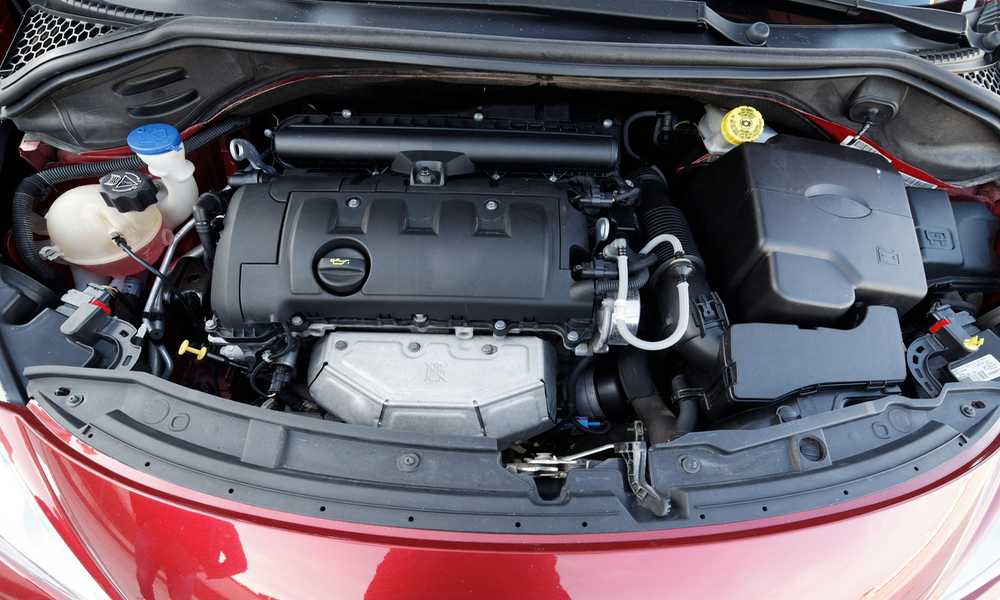
When it comes to replacing an engine in your car, one of the most important factors to consider is finding a compatible engine. Each car has specific requirements and not every engine will be suitable for your vehicle. So, how do you determine which engines are compatible with your car?
It’s essential to know the make, model, and year of your vehicle. This information will help you narrow down the options when searching for a new engine. You can consult your car’s manual or look online for compatibility charts that provide details on which engines are compatible with different models.
Additionally, contacting a reputable mechanic or speaking with experts at an auto parts store can also help you determine which engines are suitable for your car. They have extensive knowledge and experience in dealing with various makes and models.
It’s worth noting that while some engines may physically fit into your car’s engine bay, they may not be electronically compatible. Modern cars rely heavily on computer systems to control various functions, so it’s crucial to ensure that the replacement engine is compatible with these systems as well.
Determining which engines are compatible with your car involves considering factors such as make, model, year, and electronic compatibility. Consulting resources like manuals or experts can assist you in making an informed decision about selecting a suitable replacement engine for your vehicle without compromising its performance or functionality!
Final thoughts
In the world of car ownership, engine replacement is often seen as a major undertaking. While it can certainly breathe new life into an older vehicle, there are some common problems that may arise after the engine has been replaced. It’s important to be aware of these issues and take appropriate steps to address them.
One question that often arises is how long a car will last after an engine replacement. The answer to this depends on various factors such as the quality of the new engine, how well it was installed, and how well you maintain your vehicle moving forward. With proper care and maintenance, a car with a replaced engine can continue running smoothly for many years.
Another concern is whether replacing an engine can affect the transmission. While it’s possible for certain issues or mistakes during installation to impact the transmission, when done correctly by experienced professionals, replacing an engine should not have any adverse effects on your car’s transmission.
When replacing an engine, it’s also worth considering what else should be replaced or updated along with it. This includes components such as gaskets, seals, belts, hoses, and filters. It’s always wise to consult with a knowledgeable mechanic who can advise you on which parts should be replaced at the same time as your new engine to ensure optimal performance.
Some people wonder if getting a new engine is similar to getting a brand-new car altogether. While installing a new engine can certainly improve performance and extend the lifespan of your vehicle significantly, keep in mind that other aspects of your car may still show signs of wear and tear. Issues like rusted body panels or worn-out suspension components will not magically disappear with just an upgraded powertrain.
Before embarking on an engine replacement project, one crucial consideration is ensuring compatibility between engines and vehicles. Engines come in different sizes and configurations depending on make/model/year specifications so make sure you choose one that matches exactly what your vehicle requires.
